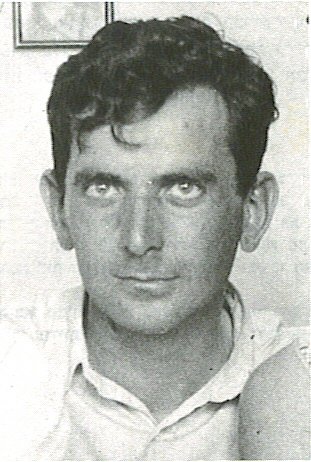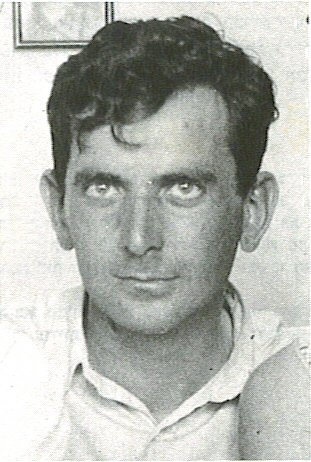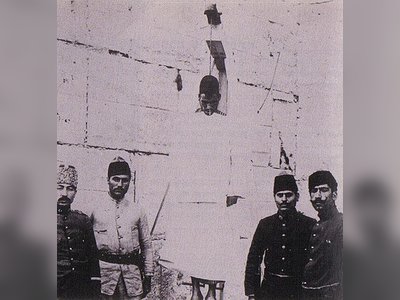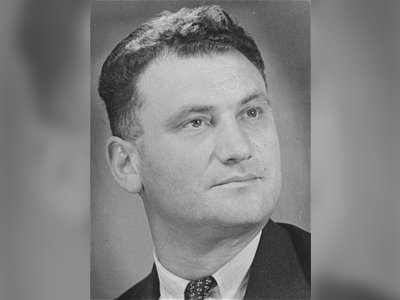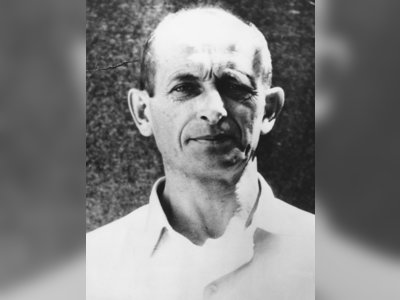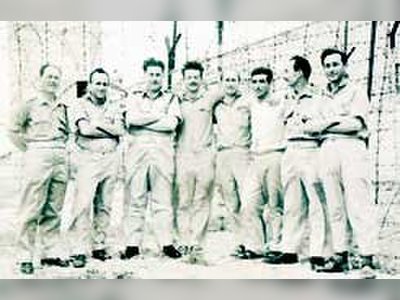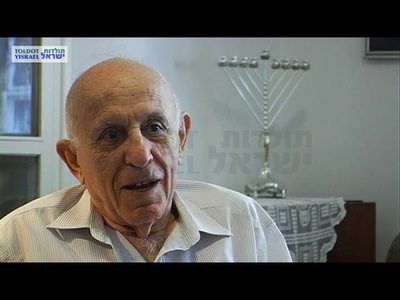מורשת גדולי האומה
בזכותם קיים
beta
Abraham Tehomi: The Founding Figure of the Irgun
Commander in the Haganah and Co-Founder of the Irgun.
Early Life
Abraham Tehomi, originally named Zilberg, was born in Odessa in 1903. He immigrated to the Land of Israel as a pioneer and worked on road construction projects. He joined the Haganah organization and served as one of its commanders in Jerusalem. Historians have concluded that he was the one who carried out the assassination of Israel de Haan, a Dutch Jew and lawyer who had joined the ultra-Orthodox community and was considered an enemy of the Zionist movement. Tehomi himself admitted to being involved in the assassination but refused to confirm that he was the one who fired the shots. According to him, the mission was given to him by Ze'ev Jabotinsky, one of the leaders of the Revisionist movement, who followed the orders of Yitzhak Ben-Zvi, the head of the Jewish National Council.
Training in Italy and Leadership in the Haganah
Tehomi and his colleague, Abraham Giora Krivitsky, were sent to a national training course known as "Italy 22" held on Mount Carmel in August 1925. This was the only national training course for commanders conducted by the Haganah in the 1920s. The "Jerusalem Group," led by Abraham Tehomi and Abraham Krivitsky, excelled in training and internal leadership. In 1925, Tehomi was appointed as the deputy commander of the Jerusalem district of the Haganah and later became the district commander. He was an activist and held strong opinions, particularly critical of the Haganah's passive stance during the 1929 Arab riots. Tehomi was suspected of having connections with the Revisionist movement and of attempting to take control of the Haganah. However, Tehomi was highly regarded by the leaders of the Haganah in Jerusalem, making it difficult for the Histadrut leaders to replace him.
Exile and Return to Israel
In the spring of 1931, Tehomi traveled to the United States for private business. Upon arrival in Piraeus, the American consul canceled his visa due to medical reasons. When Tehomi returned to Israel, he requested to be reinstated as the commander of the Jerusalem district, but in his absence, Abraham Ikar had been appointed as the new commander. Tehomi's refusal to yield his position led to a rift among the Haganah commanders in the district, and they resigned together with him. In April 1931, they established Organization B. Among those who did not return to the Haganah from Organization B, the Irgun organization was founded.
Reconciliation and Departure
In 1937, an attempt to reunite the two organizations brought Tehomi back to the Haganah. However, due to disagreements, he left the Haganah once more. From the ranks of Organization B, which did not return to the Haganah, the Irgun organization was established.
Later Life and Exile
In 1945, Tehomi and his wife, Vicky Levison, moved to the United States. There, they engaged in international trade in precious stones. In 1968, they returned to Israel and established a facility in East Jerusalem for the crafting of synthetic diamonds to be marketed in the Far East. However, Tehomi encountered financial difficulties, took a loan from the bank to set up the industry in Israel, and struggled to repay it. He eventually abandoned the factory and fled with his family to Hong Kong, where he lived until his passing in 1990.
Abraham Tehomi, originally named Zilberg, was born in Odessa in 1903. He immigrated to the Land of Israel as a pioneer and worked on road construction projects. He joined the Haganah organization and served as one of its commanders in Jerusalem. Historians have concluded that he was the one who carried out the assassination of Israel de Haan, a Dutch Jew and lawyer who had joined the ultra-Orthodox community and was considered an enemy of the Zionist movement. Tehomi himself admitted to being involved in the assassination but refused to confirm that he was the one who fired the shots. According to him, the mission was given to him by Ze'ev Jabotinsky, one of the leaders of the Revisionist movement, who followed the orders of Yitzhak Ben-Zvi, the head of the Jewish National Council.
Training in Italy and Leadership in the Haganah
Tehomi and his colleague, Abraham Giora Krivitsky, were sent to a national training course known as "Italy 22" held on Mount Carmel in August 1925. This was the only national training course for commanders conducted by the Haganah in the 1920s. The "Jerusalem Group," led by Abraham Tehomi and Abraham Krivitsky, excelled in training and internal leadership. In 1925, Tehomi was appointed as the deputy commander of the Jerusalem district of the Haganah and later became the district commander. He was an activist and held strong opinions, particularly critical of the Haganah's passive stance during the 1929 Arab riots. Tehomi was suspected of having connections with the Revisionist movement and of attempting to take control of the Haganah. However, Tehomi was highly regarded by the leaders of the Haganah in Jerusalem, making it difficult for the Histadrut leaders to replace him.
Exile and Return to Israel
In the spring of 1931, Tehomi traveled to the United States for private business. Upon arrival in Piraeus, the American consul canceled his visa due to medical reasons. When Tehomi returned to Israel, he requested to be reinstated as the commander of the Jerusalem district, but in his absence, Abraham Ikar had been appointed as the new commander. Tehomi's refusal to yield his position led to a rift among the Haganah commanders in the district, and they resigned together with him. In April 1931, they established Organization B. Among those who did not return to the Haganah from Organization B, the Irgun organization was founded.
Reconciliation and Departure
In 1937, an attempt to reunite the two organizations brought Tehomi back to the Haganah. However, due to disagreements, he left the Haganah once more. From the ranks of Organization B, which did not return to the Haganah, the Irgun organization was established.
Later Life and Exile
In 1945, Tehomi and his wife, Vicky Levison, moved to the United States. There, they engaged in international trade in precious stones. In 1968, they returned to Israel and established a facility in East Jerusalem for the crafting of synthetic diamonds to be marketed in the Far East. However, Tehomi encountered financial difficulties, took a loan from the bank to set up the industry in Israel, and struggled to repay it. He eventually abandoned the factory and fled with his family to Hong Kong, where he lived until his passing in 1990.
- אברהם תהומי – ויקיפדיהhe.wikipedia.org
